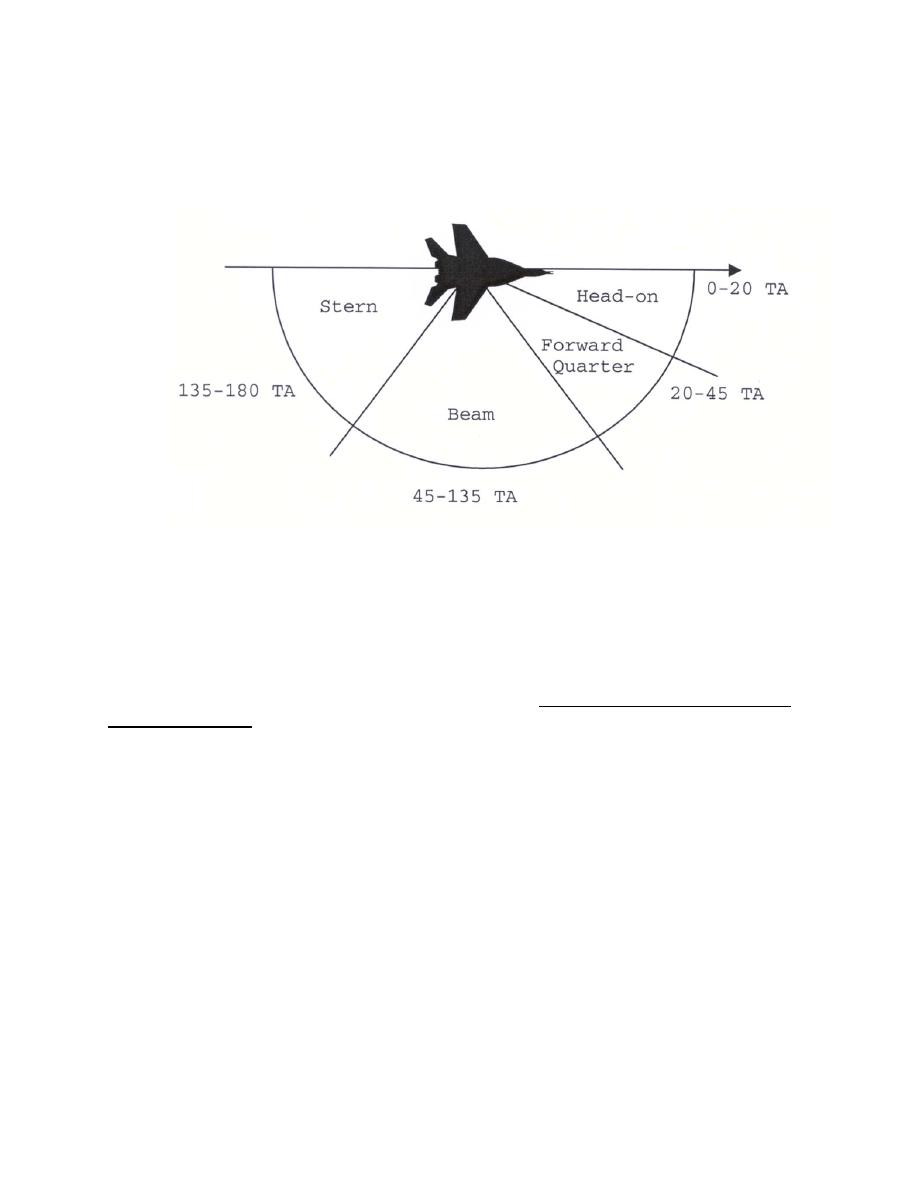 |
|||
|
|
|||
|
|
|||
| ||||||||||
|
|  INTERCEPT PROCEDURES TEXTBOOK
Fighter Positions
In the intercept, there are four approach quadrants that influence the way we accomplish the
intercept.
Figure 2
Position Advantage
Position advantage is a relative term used to describe the fighter's ability to defend an asset
(i.e. the carrier) or other defined point against an attack from the enemy. With a bogey heading
towards a defined point, less target aspect means the fighter will be in a more advantageous
position in which to defend against the bogey. In this case, as target aspect decreases, position
advantage increases. This is true at ranges in which forward quarter missiles are used. Once a
forward quarter missile is employed, the fighter will attempt to increase TA to achieve a position
at the bogey's six, thus gaining a rear quarter positional advantage with high TA. This is the goal
the fighter will strive for while at VT-86.
Computing Lateral Separation
Lateral separation is the perpendicular distance from the fighter to the bogey's flight path.
Lateral separation (lat sep, also called lateral displacement, or LD) occurs in the horizontal plane.
It may be measured in terms of feet or nautical miles and is determined from target aspect and
slant range.
29
|
|
Privacy Statement - Press Release - Copyright Information. - Contact Us |